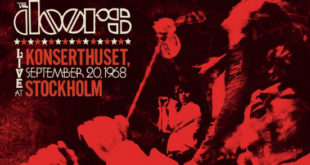
Mickey Mouse – Disney’s 75 year-old corporate symbol – has, as a result of being that symbol, been drained of personality, personal history, context, anything specific enough to narrow his generic appeal. Disney, which moved legislative mountains to retain the copyright over its mascot until at least 2023, is conflicted on what to do with Mickey:
- “Boring,” “embalmed,” “neglected,” “irrelevant,” “deracinated” and, perhaps most damning, “over” are some of the adjectives that cropped up in recent interviews with people in the cartoon, movie and marketing businesses. And strangely for such a well-known figure, Mickey doesn’t even have a back story: no clearly defined relations, no hometown, no goals, no weaknesses. According to David Smith, director of the Disney archives, the company maintains no “biography” of the character; he is who he is.
But Mickey is not just another property that Disney owns: he’s the hallmark, the frontman, the ambassador for its theme parks, the logo on its business cards. A significant portion of the Disney empire is built around this strange creature. And yet, at a time when the company is already facing an almost cartoonishly daunting litany of travails – a hostile takeover bid, the loss of its highly successful partnership with the animation studio Pixar, mass layoffs at its own animation studio, the very public campaign by Roy E. Disney, nephew of Walt, to dethrone the C.E.O., Michael Eisner – his appeal is apparently starting to slip.
Publicly, the company maintains an optimistic stance. “In my world,” said Andy Mooney, chairman of the consumer products division, “a character that generates $4.5 billion a year in retail revenue and is at least four times larger than any other character in the world except Winnie the Pooh” – which Disney also controls – “doesn’t need refurbishing.” According to Mr. Mooney, Mickey has “98 percent unaided awareness for children 3 to 11 worldwide,” and has started to appear again as a “real favorite” among girls 8 to 12 and, surprisingly, boys 13 to 17.
The company acknowledges that revenue from Mickey merchandise, measured as a portion of all consumer products, has shrunk significantly since 1997. What Disney doesn’t acknowledge is that Mickey’s reputation, measured in conversations with industry watchers, is shrinking even more. Still, signals of the Mouse’s distress have lately begun to seep out, almost unconsciously, from the soul of Disney’s business: its storytelling. In a video game called “Kingdom Hearts” – which has sold more than 4 million units since its release in 2002 and is frequently cited as evidence of Mickey’s continuing relevance – the mouse barely appears. Instead, he is relegated to a subplot that seems eerily allegorical. According to the game’s Web site, evil marauding aliens known as the Heartless are threatening the Kingdom. (Roy Disney has called the company under Mr. Eisner’s leadership rapacious and soulless.) “There’s turmoil in Disney Castle,” it says. “King Mickey is missing.”
….”Companies at times let a character linger because they are not sure what to do with it and fear going the wrong way,” said Avi Arad, CEO of Marvel, which has revived its classic Spiderman character. “So they do nothing. Mickey right now doesn’t have a dialogue. He’s not carrying any banners. Maybe right now he doesn’t stand for anything but nostalgia. Nostalgia is fine, but it is not enough.”
Whose nostalgia it is makes a crucial difference. Some marketers said that these days, Mickey merchandise is mostly bought by parents – an ominous sign. Martin Brochstein, executive editor of the Licensing Letter, calls Mickey “irrelevant to a huge generational chunk that grew up on `Sesame Street’ or Nickelodeon but really had no contact with Mickey unless they went to one of the theme parks.” According to Cindy Levitt, vice president of Hot Topic, a mall-based fashion retailer, kids themselves are buying clothing featuring SpongeBob and, of all things, the Care Bears. To be popular with today’s hipster teens and 20-somethings, she said, a character “has to have originated in their youth. It has to be from the 1980’s.” Mickey, she added, doesn’t “register” with her clients. “He’s too old. He’s their parents’ character.”
….as the moviegoing public’s taste for shorts diminished, Mickey had fewer animated outlets; he appeared in 118 cartoons before 1960 but in only two thereafter. Disney managed to keep him before the public by having him “play” other characters: Jack in “Mickey and the Beanstalk,” for instance, or Bob Cratchit in “Mickey’s Christmas Carol.” But in the process he shed what was left of his own story. What replaced it, said Jim Hardison, creative director of Character – a company that “revitalizes” icons like Popeye and the Rice Krispies spokes-toons Snap, Crackle and Pop – was the story of Disney itself.
“If I was looking for the crossover point where Mickey’s story morphed into the Disney story, it was `The Sorcerer’s Apprentice,’ ” said Mr. Hardison, referring to the Mickey segment of Disney’s 1940 classic, “Fantasia,” in which the mouse, as an aspiring magician, attempts to harness his master’s tricks. “That’s where he cemented his place as the source of Disney magic. Magic is such an important characteristic of Disney, but it wasn’t an important characteristic of Mickey. Once he becomes magical, he is no longer the everyman underdog. He went from being the little guy against the world to a symbol of what Disney does.”
….Mickey doesn’t have many options, though, for new stories. It’s the job of the Corporate Brand Management group – often referred to as the Mickey Police – to ensure, as Maria Gladowski, a consumer products spokeswoman, put it, that the efforts of the company stay true to the core values and personalities of each character. The official list of Mickey’s current attributes reads like a Boy Scout pledge: “funny, fun-loving, high-energy, optimistic, good-natured, can-do spirit, helpful, trustworthy and adventurous.” As a result, mostly retired from the movies, Mickey only appears where he cannot talk: as merchandise and as a giant mute host at the theme parks.
….Disney is in a difficult position. The company would like to have Mickey make more money – Mr. Mooney of the Consumer Products division thinks the mouse could bring in an additional $1 billion a year in North America. Some think Disney could do even better; Marshal Cohen, chief analyst at NPD Group, a market research company that has worked with Disney on occasion, said: “The Mickey brand is undervalued in the consumer’s purchase power. You could probably grow the brand another 40 percent.”
….A new Mickey TV show on the Disney Channel, planned for early 2006, may also help. But the holy grail of character marketing is a blockbuster movie. Disney is making two films for their mascot – one in which, for the first time, the mouse is rendered in 3-D animation. But, as if in acknowledgment of the damage that an unsuccessful film can do, the company is releasing them direct to video. [NY Times]
Ironically, probably the best way to revive the Mouse as a vibrant character is to allow the public to get at him via the public domain, but that’s another 20 years off, at least.
 Blogcritics The critical lens on today's culture & entertainment
Blogcritics The critical lens on today's culture & entertainment



